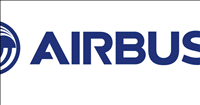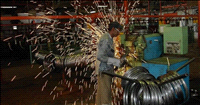Mapping New Paths for a Stressed-Out Internet
By By Jan Zverina | 11 Sep 2010
The San Diego Supercomputer Center and Cooperative Association for Internet Data Analysis (CAIDA) at the University of California, San Diego, in a collaboration with researchers from Universitat de Barcelona in Spain and the University of Cyprus, have created the first geometric ''atlas'' of the Internet as part of a project to prevent our most ubiquitous form of communication from collapsing within the next decade or so.
In a paper published this week in Nature Communications, CAIDA researcher Dmitri Krioukov, along with Marián Boguñá (Universitat de Barcelona) and Fragkiskos Papadopoulos (University of Cyprus), describe how they discovered a latent hyperbolic, or negatively curved, space hidden beneath the Internet's topology, leading them to devise a method to create an Internet map using hyperbolic geometry.
In their paper, Sustaining the Internet with Hyperbolic Mapping, the researchers say such a map would lead to a more robust Internet routing architecture because it simplifies path-finding throughout the network.
''We compare routing in the Internet today to using a hypothetical road atlas, which is really just a long encoded list of road intersections and connections that would require drivers to pore through each line to plot a course to their destination without using any geographical, or geometrical, information which helps us navigate through the space in real life,'' said Krioukov, principal investigator of the project.
Now imagine that a road – or in the case of the Internet, a connection – is closed for some reason and there is no geographical atlas to plot a new course, just a long list of connections that need to be updated. ''That is basically how routing in the Internet works today – it is based on a topographical map that does not take into account any geometric coordinates in any space,'' said Krioukov, who with his colleagues at CAIDA have been managing a project called Archipelago, or Ark, that constantly monitors the topology of the Internet, or the structure of its interconnections.
Like many experts, however, Krioukov is concerned that existing Internet routing, which relies on only this topological information, is not really sustainable. ''It is very complicated, inefficient, and difficult to scale to the rapidly growing size of the Internet, which is now accessed by more than a billion people each day. In fact, we are already seeing parts of the Internet become intermittently unreachable, sinking into so-called black holes, which is a clear sign of instability.''












.jpg)


.jpg)













